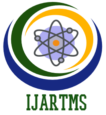Conferences
Conference proceedings are a collection of research papers presented at a professional association meeting. These meetings are sometimes referred to as conferences, symposia, workshops, expositions, exhibitions, and the like. The papers go by a variety of names also, like: papers, abstracts, extended abstracts, manuscripts, presentations, etc. If the publications are filled with full papers, they are considered proceedings, or conference proceedings. Abbreviated papers are referred to as abstracts or conference abstracts. Conference abstracts can be simple (1 page), or extended (2-15 pages). So these publications can be called conference proceedings, symposium publications, workshop presentations, annual meeting papers, or any combination, but we’re sure you get the idea.
Engage with Leading Edge Research – Conference proceeding are a way to engage with leading edge research prior to official journal publication. They may include: findings, innovations, best practices, or new methodology especially in science & engineering.
The vast majority of our proceedings are in the engineering, science and technology fields. Symposium publications or proceedings titles may include papers from between 10 and 2,000 different researchers, depending on the topic and the size of the conference. Many of these conferences are recurring (held each year or every two years, three years, etc.), covering the same basic topics but including the latest progress in their specific discipline or subject. These publications have long provided a breadth and depth of up-to-date research for libraries, technical institutes, individual researchers, and corporations. As a result, science and technology libraries continue to find conference proceedings to be an attractive source of published research.
Since the collection of papers comes from individual researchers, the character of proceedings is distinctly different from an educational textbook. Each paper typically is quite isolated from the other papers in the proceedings. Mostly there is no general argument leading from one contribution to the next.
Selecting and collecting papers for conferences is organized by one or more persons, who form the editorial team. The quality of the papers is typically ensured by having external people read the papers before they are accepted in the proceedings. The level of quality control varies considerably from conference to conference: some have only a binary accept/reject decision, others go through more thorough feedback and revisions cycles (peer reviewing or refereeing). Depending on the level of the conference, this process can take up to a year. The editors decide about the composition of the proceedings, the order of the papers, and produce the preface and possibly other pieces of text. Although most changes in papers occur on basis of consensus between editors and authors, editors can also single-handedly make changes in papers.
